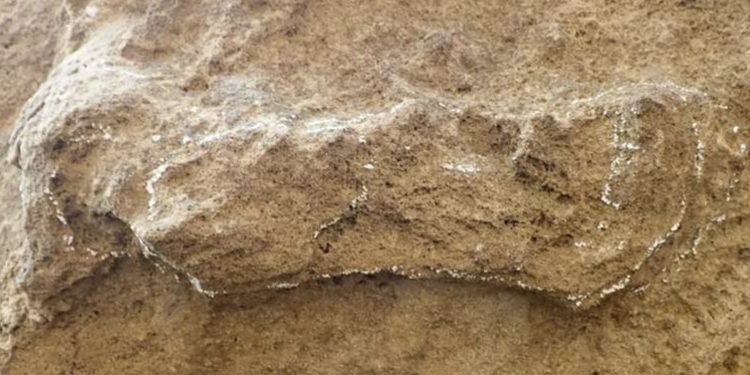Over two decades ago, the dawn of the millennium saw ancient human footprints more than 50,000 years old as highly infrequent. A mere four sites across Africa housed such remnants, with two in East Africa (Laetoli, Tanzania, and Koobi Fora, Kenya), and two in South Africa (Nahoon and Langebaan). The Nahoon site, unveiled in 1966, marked the first description of a hominin tracksite. Now scientists have found what they are saying is the oldest human footprint in the world belonging Homo erectus.
Oldest human footprint in the world
Fast forward to 2023, and the scenario has drastically evolved. A lack of thorough exploration seems to have contributed to the earlier dearth of discoveries. The African continent currently boasts 14 hominin ichnosites (a term encompassing tracks and other traces) older than 50,000 years. Interestingly, these sites can be classified into two clusters – five in East Africa and nine on the Cape coast of South Africa, with an additional ten sites scattered worldwide, including the UK and the Arabian Peninsula.
Given the scarcity of skeletal hominin remains on the Cape Coast, these ancient tracks serve as valuable clues, enhancing our understanding of early hominins in Africa.
Newly Dated Hominin Ichnosites Unearthed
In a recent article in the international journal of trace fossils, Ichnos, scientists divulged the ages of seven recently identified and dated hominin ichnosites on South Africa’s Cape south coast, now part of the “South African cluster” of nine sites.
The sites exhibited a range of ages, the most recent being 71,000 years old. The oldest, dating back 153,000 years, is particularly noteworthy, bearing the oldest footprint yet attributed to our species, Homo sapiens.
Echoing the Archaeological Record
These fresh dates support the archaeological record. The Cape south coast region’s evidence, including the evolution of advanced stone tools, art, jewelry, and shellfish harvesting, affirms it as a thriving habitat for early anatomically modern humans before they spread from Africa to other continents.
Considerable differences exist between the East African and South African tracksite clusters. East African sites, such as Laetoli, date back to 3.66 million years ago, with traces not of Homo sapiens but of earlier species like australopithecines, Homo heidelbergensis, and Homo erectus. These tracks, primarily found on surfaces requiring careful excavation, contrast with the substantially younger South African sites attributed to Homo sapiens. Discovered in aeolianites (cemented versions of ancient dunes), these tracks are usually fully exposed and thus do not typically necessitate excavation.
Dating Tracks with Optically Stimulated Luminescence
Dating these deposits is crucial, and here optically stimulated luminescence plays a significant role. This technique measures how long a grain of sand has been buried, effectively dating the sediment. Given that these tracks were impressions made on wet sand, this method provides reliable age estimates, consistently used in dating previous finds in the area.
The research’s overall date range for the hominin ichnosites – around 153,000 to 71,000 years – aligns with previously reported studies from similar geological deposits in the region.
As explained by scientists, the research, based at the African Centre for Coastal Palaeoscience at Nelson Mandela University in South Africa, continues, suspecting more hominin ichnosites are waiting to be discovered. The hunt also needs to include older deposits, ranging in age from 400,000 years to over 2 million years.
In a decade, scientists expect a much longer list of ancient hominin ichnosites, allowing them to learn more about our ancient ancestors and their habitats.
Have something to add? Visit Curiosmos on Facebook. Join the discussion in our mobile Telegram group











